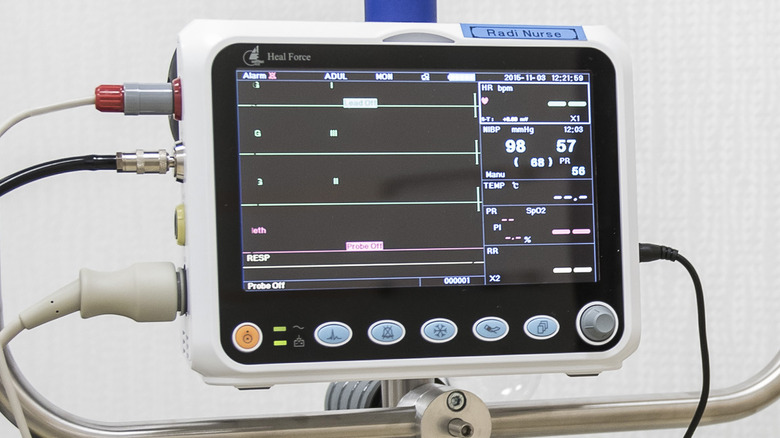Systolic Versus Diastolic Blood Pressure: What's The Difference?
Chances are, your regular checkup at the doctor will include getting your blood pressure taken. This is when the doctor or nurse puts a cuff around your arm and pumps it up tightly. It's different from having your heart rate or pulse checked, and it's important to know what the numbers mean.
As your heart pumps blood through the body, the force creates pressure on the walls of the arteries, according to the U.S. Centers for Disease Control and Prevention (CDC). The arteries carry blood to other parts of the body all day long, which causes your blood pressure to fluctuate throughout the day. It's measured as 2 numbers with a blood pressure cuff that's strapped snugly around your upper arm, according to MedlinePlus. The pressure can be measured automatically with a machine or manually by a healthcare provider. The cuff inflates with air and tightens around your arm, and once it reaches the highest point, it will begin to deflate. At this point, the first sound of blood pulsing is measured, marking the first number (systolic pressure). Once the cuff deflates, the blood pulsing sound isn't heard anymore, at which point the second measurement is taken (diastolic pressure).
What the two numbers mean
These 2 numbers make up your blood pressure measurement. If your blood pressure is too high, it can increase your risk for heart attack, stroke, and heart disease (via the CDC). If it's too low, it may mean that there's not enough blood flowing throughout the body, according to Verywell Health. However, there's a difference in the meaning of the 2 numbers.
Systolic pressure measures the force of the blood being pumped into the arteries during a heartbeat (via Verywell Health). A healthy systolic pressure at rest is 120 mmHg (millimeters of mercury) or lower. If this number is too high, it can mean that the arteries are narrowing, causing the heart to pump harder. If it's too low, it can mean that you don't have enough blood in your body due to dehydration or major bleeding.
The other number is called diastolic pressure, which measures the force of blood in between heartbeats when the heart is filling with blood again (via Verywell Health). At rest, a typical diastolic pressure is 80 mmHG or lower. If diastolic pressure is too low, it can also mean that dehydration or severe bleeding may be at play.
These numbers can change due to factors like physical activity, stress, and hydration levels. It's important to get your blood pressure taken regularly to monitor for high blood pressure.


